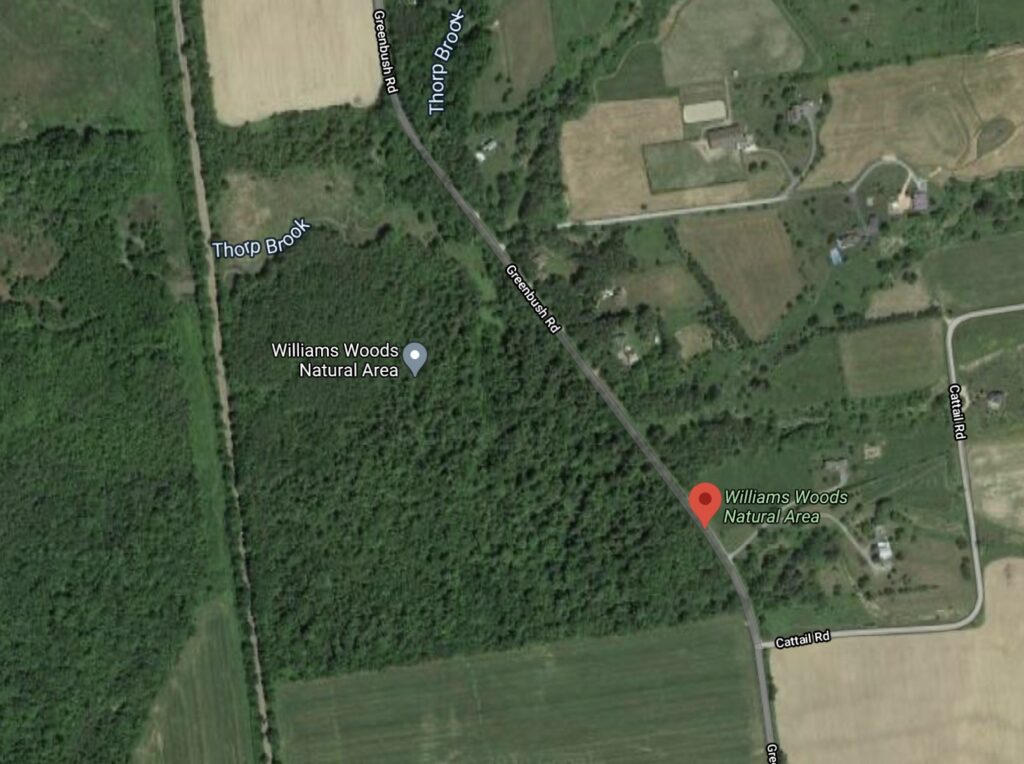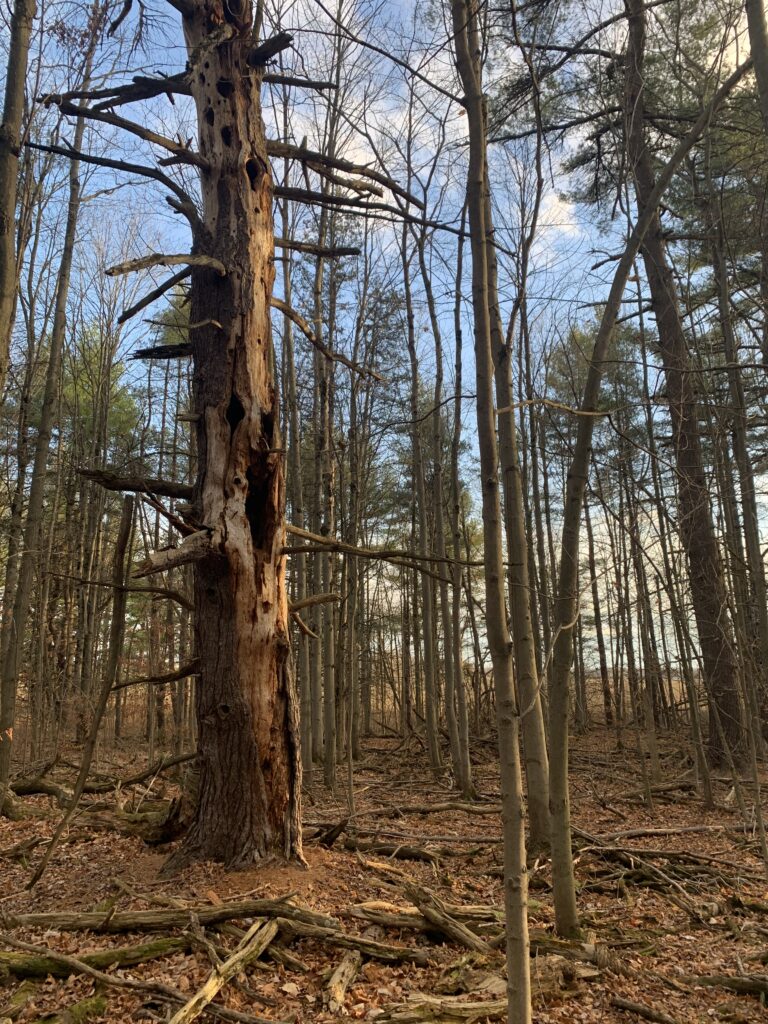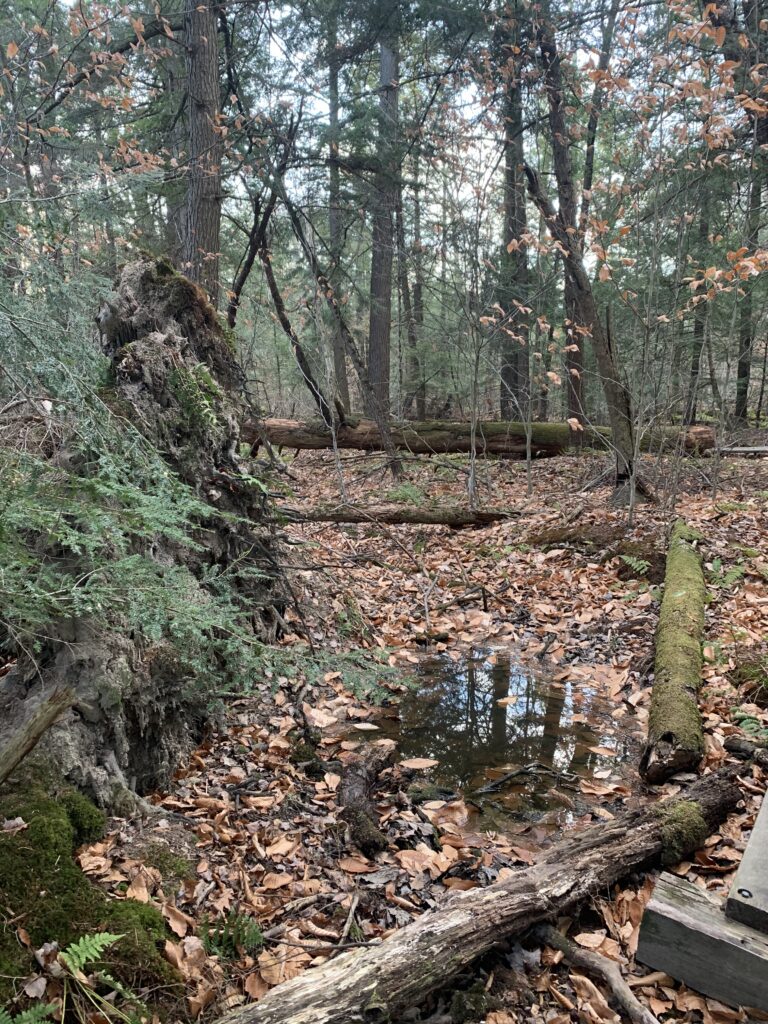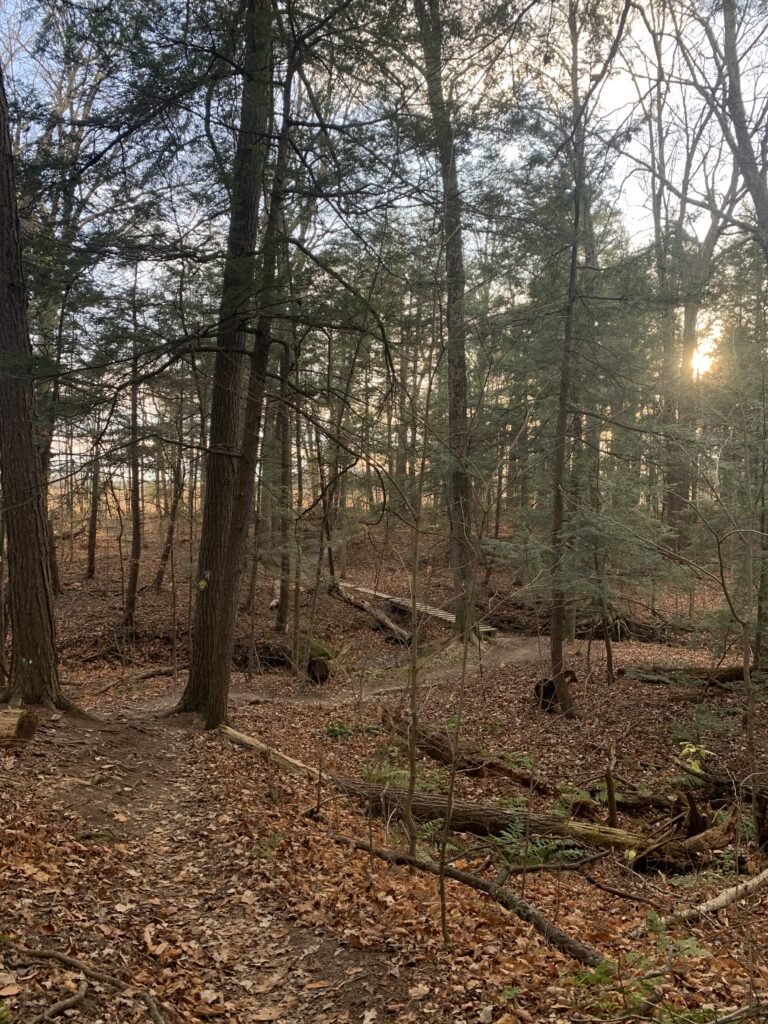
Since I have been studying remotely this semester, my updated phenology place is my “touchstone landscape” that I have been visiting throughout the semester. Because my touchstone landscape is only two miles from my original phenology place, the ecology is not vastly different from that of my phenology place. The two landscapes do, however, differ very much in their composition and interaction with other systems. While my original phenology place is composed largely of shagbark hickory, oak, and poplar trees, my touchstone landscape is composed primarily of Eastern hemlock, red maple, yellow birch, and ironwood trees.
Not only is the forest composition very different between the two landscapes, but the systems exist within the larger context of Vermont ecology in very different ways. My phenology place, for example, is a small plot of land on private property that is surrounded by farmland but goes largely untouched and unmanaged by humans. My touchstone landscape, however, is a natural area that is used as a hiking trail. This means that this landscape is managed and kept up by humans on a regular basis in order to keep the hiking trails passable.
As I have watched both places throughout the fall, they have progressed at very similar paces. This makes sense given the close proximity of the areas to one another. The major difference I have found between the two places is the presence of wildlife. On my original phenology place, I have seen a great deal of evidence of wildlife activity recently, whereas on my touchstone landscape, I have only seen evidence of squirrels and birds this fall.




References:
Google Maps. (2020). “Williams Woods Natural Area in Charlotte, Vermont.”
Burnham, E. (Photographer). (2020). All photos.